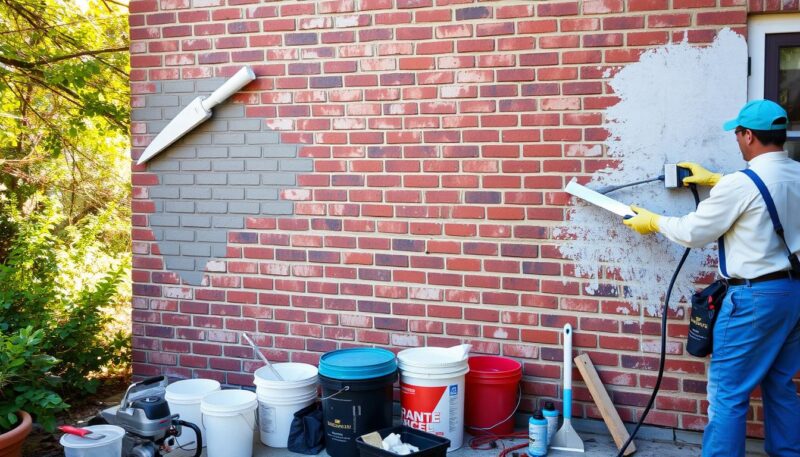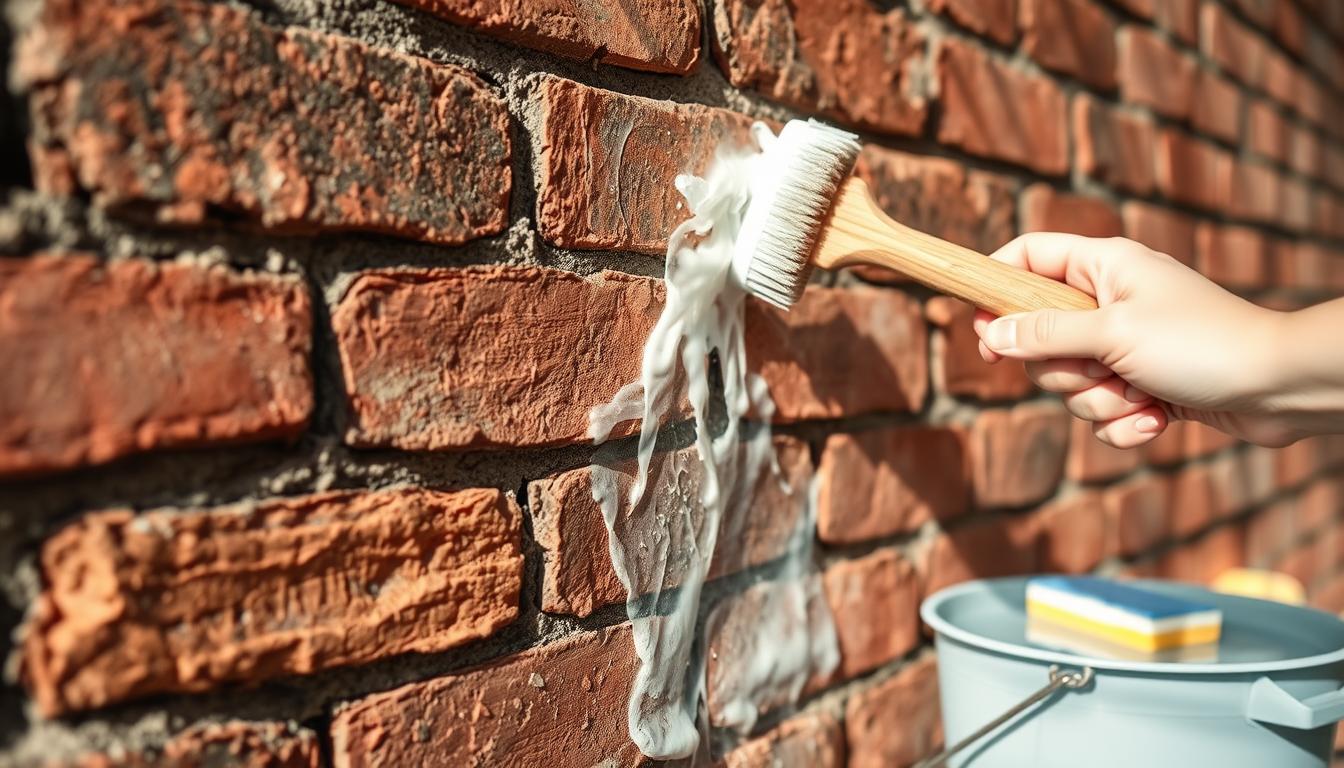Brick surfaces bring an unparalleled charm to any space, be it your cozy living room fireplace or the stately exterior walls of your home. However, over time, they can become marred by paint, whether from previous renovations or accidental splashes. Given that brick is a highly porous material, removing paint without causing damage can be a challenging task. This guide provides you with effective methods for paint removal, while ensuring the integrity of your brick surfaces is maintained. Whether you’re tackling a small indoor project or a large exterior restoration endeavor, these tips will help you get the job done.
Understanding how to preserve the unique texture and durability of brick is crucial in any paint removal process. You’ll explore different methods and tools, each suited for various types of paint and brick conditions. Safe cleaning practices are of paramount importance throughout this process to protect both your brick surfaces and your health. With the right approach, your brick surfaces can be restored to their original beauty, contributing to the overall aesthetic and value of your home.
Key Takeaways
- Brick is highly porous, making paint removal a challenging task.
- Paint strippers are best suited for latex paint products on brick.
- Muriatic acid effectively removes mineral paint and lime washes on small, isolated areas of brick.
- Blast techniques, though costly, ensure thorough paint removal, especially for large-scale projects.
- DIY methods using vinegar and a scrub brush are eco-friendly and suitable for small areas.
- Always prioritize safety: use personal protective equipment and ensure adequate ventilation.
- Consider professional services for extensive or challenging paint removal tasks.
Stay tuned as we delve deeper into the specifics of each technique, offering step-by-step instructions and highlighting the pros and cons of each method. With the right tools, preparation, and a bit of patience, you can achieve professional-looking results without compromising the structural integrity or aesthetic appeal of your brick surfaces.
Effective Methods for Paint Removal from Brick Surfaces
Removing paint from brick surfaces requires careful consideration of various methods to ensure an effective finish without harming the underlying brick. Employing the appropriate strategies can make a significant difference in the outcome. Here, we discuss several approaches that are widely acclaimed for their efficacy and attention to brick care.
Using Paint Stripper
Paint stripper is a popular and effective strategy for paint removal. Products designed specifically for brick can eliminate up to 15 layers of paint. Most strippers need about 10-15 minutes to break the molecular bond between the paint and brick surface, making removal easier. Opting for eco-friendly solutions is recommended, particularly in households with children or pets. Gel-based strippers are ideal for vertical surfaces, adhering well and providing efficient paint removal.
Muriatic Acid for Mineral Paints
Muriatic acid is a potent option for erasing mineral paints from your brick surface. When using this method, ensure proper ventilation and follow concentration guidelines scrupulously. Safety gear, including gloves and goggles, is essential to prevent harm. Since muriatic acid can be hazardous, it is important to prioritize both personal safety and environmental care during the application process.
Blasting Techniques
Blasting techniques, like sandblasting or power washing, are effective for large-scale paint removal. However, these methods carry inherent risks, especially for older or brittle brick, potentially weakening or damaging the surface finish. While these techniques can be gentler on brick than some chemical methods, enlisting professional blasters is advised to balance effectiveness with the careful treatment of your brick.
DIY Vinegar and Scrub Brush Method
For those inclined towards DIY methods, a mix of white vinegar and water paired with a scrub brush offers an eco-friendly solution for minor paint removal tasks. This method is less impactful on the environment and effective on small areas or paint splashes. Extensive scrubbing is necessary, making it less suitable for large surfaces but a viable option for smaller, detailed work.
How to Remove Paint from a Brick Without Damaging the Surface
When it comes to tackling the removal of paint from brick surfaces, maintaining the brick’s preservation integrity while achieving a clean finish is vital. Proper techniques and cleaning tools are essential to avoid causing any damage to the brickwork.
What Not to Do
To safeguard your brick surfaces during restoration projects, avoid methods such as sandblasting, power washing, or mechanical sanding. These aggressive approaches can erode the brick, causing irreversible damage. Additionally, while DIY solutions like vinegar may appear harmless, they often fall short in effectiveness, especially for larger areas. Opt for compounds specifically designed for paint removal from brick to ensure the job is done right.
Additional Tips for Safe Paint Removal
Investing in protective gear is paramount to your safety and the success of your home improvement projects. Eyewear, chemical-resistant gloves, and appropriate clothing are non-negotiable when working with paint strippers, particularly those containing potent chemicals like methylene chloride or acetone. Ensure your workspace is well-ventilated to reduce exposure to harmful vapors. Adhering to manufacturer instructions for application and drying times ensures the preservation integrity of your brick surfaces.

Choosing the Right Tools
Selecting the correct cleaning tools for the job is crucial. Scrapers that fit within small grooves of the brick enhance the effectiveness of the paint removal process without compromising the brick’s surface. Tools like Citri-Strip and SmartStrip are highly recommended by professionals for their gentle yet efficient performance. A gel-based paint stripper is ideal, as it requires fewer layers and clings to vertical surfaces, making it easier to manage. Here’s a quick comparison:
| Paint Stripper | Effectiveness | Application |
|---|---|---|
| Citri-Strip | High | Easy to apply, requires fewer layers |
| SmartStrip | High | Ideal for both small and large areas |
| Gel-Based Stripper | Moderate | Effective for vertical surfaces |
By using these maintenance tips and aligning your methods with these best practices, you can ensure a successful paint removal project without compromising the integrity of your brick surfaces.
Conclusion
Removing paint from brick surfaces can be a challenging yet rewarding task in your home improvement journey. This process is fundamental to the surface protection and maintenance of your brickwork, ensuring its longevity and aesthetic appeal. Given that brick is a naturally porous material, once the paint seeps into the pores, it can be arduous to remove, taking several hours to days. However, mastering safe cleaning techniques helps preserve the brick’s structural integrity.
Utilizing effective methods like Eco Solutions Paint Remover and Graffiti Go, which are water-based and non-toxic, illustrates a safe and environmentally friendly approach to restoration projects. These products efficiently tackle various types of paints, stains, and varnishes without introducing hazardous substances into your home. Testing any paint removal product on a small area first is advisable to ensure it doesn’t damage the brick or compromise surface protection.
For particularly tough paint, combining chemical paint strippers with manual tools such as scrub brushes and putty knives can be beneficial, while protective gear like goggles, dust masks, and overalls are essential for safe cleaning operations. Although DIY methods can yield significant accomplishments, enlisting the help of professionals can sometimes be the best route. Professional advice or services ensure the preservation of your brick’s integrity and appearance, helping you achieve the best results for your restoration projects.
In summary, whether you are aiming for enhanced property value or improved breathability, choosing the right paint removal technique tailored to your specific needs is crucial. Always prioritize safety, product effectiveness, and professional guidance when necessary to maintain and protect the beauty of your brick surfaces.

